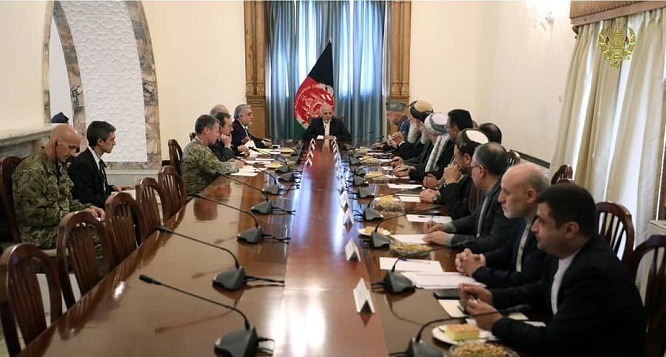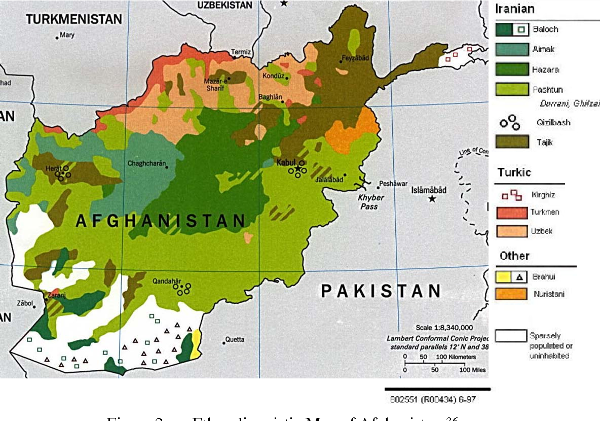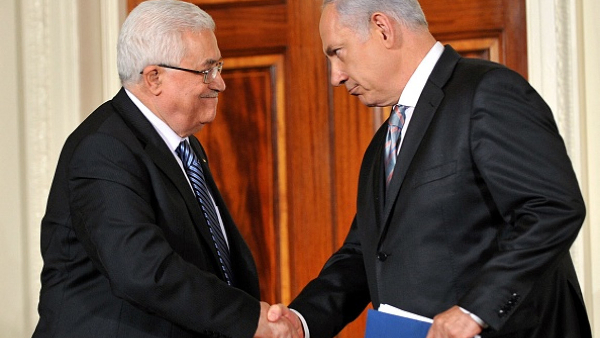A US-Taliban peace agreement seems closer than ever, but the whole thing could unravel when it comes time for intra-Afghan talks.

By Daud Khattak
The Talibanís latest gesture of "scaling down" military operations by declaring a temporary seven to 10 day truce is believed to be the most significant development in the 18-month negotiations between representatives of the militiaís Qatar-based office and the United States.
Quoting unnamed Taliban officials, several international media outlets reported last week that the Taliban may announce a temporary ceasefire. Taliban spokesman Sohail Shaheen later told Pakistanís Dawn newspaper that the militants "have agreed to scale down military operations in days leading up to the signing of the peace agreement with the United States."
Although there is no comment from the U.S. Special Representative for Afghanistan Reconciliation Zalmay Khalilzad so far, the flurry of diplomatic visits encompassing the United States, Kabul, Islamabad, and Doha over the past few weeks signify that a temporary arrangement to put an end to the 18-year Taliban war is in the offing.
The temporary ceasefire, if agreed upon, may provide a new lease on life to the on-again, off-again peace talks. A more permanent agreement, however, faces a number of pitfalls that could scuttle the ultimate objective of bringing lasting peace to Afghanistan.
In the first place, and to the detriment of the expected peace agreement, the result of Afghanistanís September 28, 2019 presidential election is still pending. President Ashraf Ghaniís partner in the National Unity Government, Dr. Abdullah Abdullah, who was also his key rival in last yearís poll, raised questions about the preliminary results bringing a narrow victory for Ghani.
Since then, Abdullahís supporters have staged several protest demonstrations demanding investigations. The long delay in announcing the final result is believed to be caused by a desire to avoid the possible blowback at this critical juncture, when the Taliban and the United States are fine-tuning the long sought-after peace deal.
Letís assume that the United States and Taliban do ink an agreement outlining a step-by-step withdrawal of the U.S. troops from Afghanistan and the Taliban sitting face-to-face with the Afghan leadership to finalize a permanent settlement. Who is going to own the peace deal on the Afghan side and carry it forward in this state of uncertainty?
In a most probable and probably the most practical scenario, the Ghani-Abdullah duo will continue their National Unity Government regardless of the final result. But the major question baffling many minds in and outside Kabul is on what terms and conditions - and for how long - the two partners-cum-rivals could stand shoulder-to-shoulder in absence of the international community. After all, they were not ready to see an eye-to-eye even in the presence of the United States and its international partners.
Next to Ghani-Abdullah challenge lies the third and probably more confounded side of the Afghan conflict: The Taliban. Who is going to amass what gains and on what terms and conditions in the post-withdrawal Afghanistan is so far a guessing game. But the Taliban are probably the most influential force in deciding this question, and to some regional and international players, the militia is the crucial factor for bringing peace to Afghanistan. But will they act in the interests of peace?
Besides suffering from their own dilemmas vis-à-vis the peace process, the Talibanís possible inclusion in power-sharing in Kabul is seen with concern for two major reasons: The militiaís desire for power and their world view.
Will the Taliban agree to take a back seat and let the Ghani-Abdullah duo continue running the country or will they insist on sitting in the driverís seat by taking the others as junior partners?
Given the bitter memories of the Taliban running Afghanistan with an iron fist (including committing serious human rights violations) in the mid-1990s, none of the Afghan leadership will easily agree to accept the militia as the leading political force. This may cause a fresh power struggle that may lead to many warlords switching sides to stay on the right side of the powerful.
The Taliban worldview is another major factor causing fear and concern among Afghans. Observers believe that, despite being staying in castle-like houses and sitting across from suited diplomats in five-star luxury hotels, there is not much change in the Talibanís views about women, human rights, freedom of expression, etc.
In a recent interview with PBS Frontline, when asked about womenís rights, Taliban chief negotiator Mullah Abdul Ghani Baradar said: "There has been no change in the Taliban in this regard. We accept all the rights that God has granted to women under Islamic law, if they want to live and work, of course we will allow them."
The Talibanís internal dilemma, should they forge a peace agreement without fully implementing their ideals, is an equally serious challenge for a group that recruited and brainwashed their foot soldiers in the name of an Islamic utopia. Persuading the rank-and-file to accept something less than what had been promised will be a daunting challenge.
Besides, disarming the Taliban will be a hurdle. The Taliban leadership would be wary about how to rearm their soldiers if the post-withdrawal talks for a comprehensive peace deal with the Afghan leadership do not make headway.
For the Afghan government, on the other hand, trusting the Taliban leadership with a parallel army at their beck and call will be difficult. One must not ignore the reality that the world recognizes the Talibanís right to be partners in the Kabul government nearly 18 years after their ouster not because of some bigger change in their composition or policy. Rather, it is because of their violence and military might.
Regional and international aspects, rather than local factors, have contributed the most to the continuation of the Afghan conflict. After a U.S.-Taliban agreement, Afghanistan may run the risk of becoming a chessboard for its bigger and more powerful neighbors without solid guarantees of noninterference. This has happened before and may happen again if the United States withdraws its forces without ensuring solid guarantees from Pakistan, India, and Iran not to interfere in Afghan affairs.
Apart from widespread concerns about security situation, the post-Taliban Afghanistan has made progress. Indicators show advances in the areas of human and womenís rights, education, awareness among the people, infrastructure, life expectancy, poverty reduction, health, and to some extent the economy.
Disagreement among the Afghan leadership in a post-withdrawal Afghanistan will not only spoil these hard-earned gains, but also push the country into another conflict.
To avoid such a conflict, the United States and the international community need to make sure the Taliban do not revert to violence once they sit for peace talks with the Afghan leadership. Talks should be the only means to finding a lasting solution, even if the process continues for a longer time than expected.
Secondly, the Afghan government should be given its due place in the intra-Afghan dialogue (between the Taliban and the rest of the Afghan leadership). Any effort on part of the Taliban to undermine the government authority may create problems and devalue the whole process.
Regional actors - Pakistan, Iran, and India, in particular - must not be provided an excuse to influence the intra-Afghan peace talks by picking sides and supporting or opposing one or another group or faction.
LINK: https://www.ansarpress.com/english/13200
TAGS:






























 Violation of the sovereignty and rights of afghan citizens by America
Violation of the sovereignty and rights of afghan citizens by America




